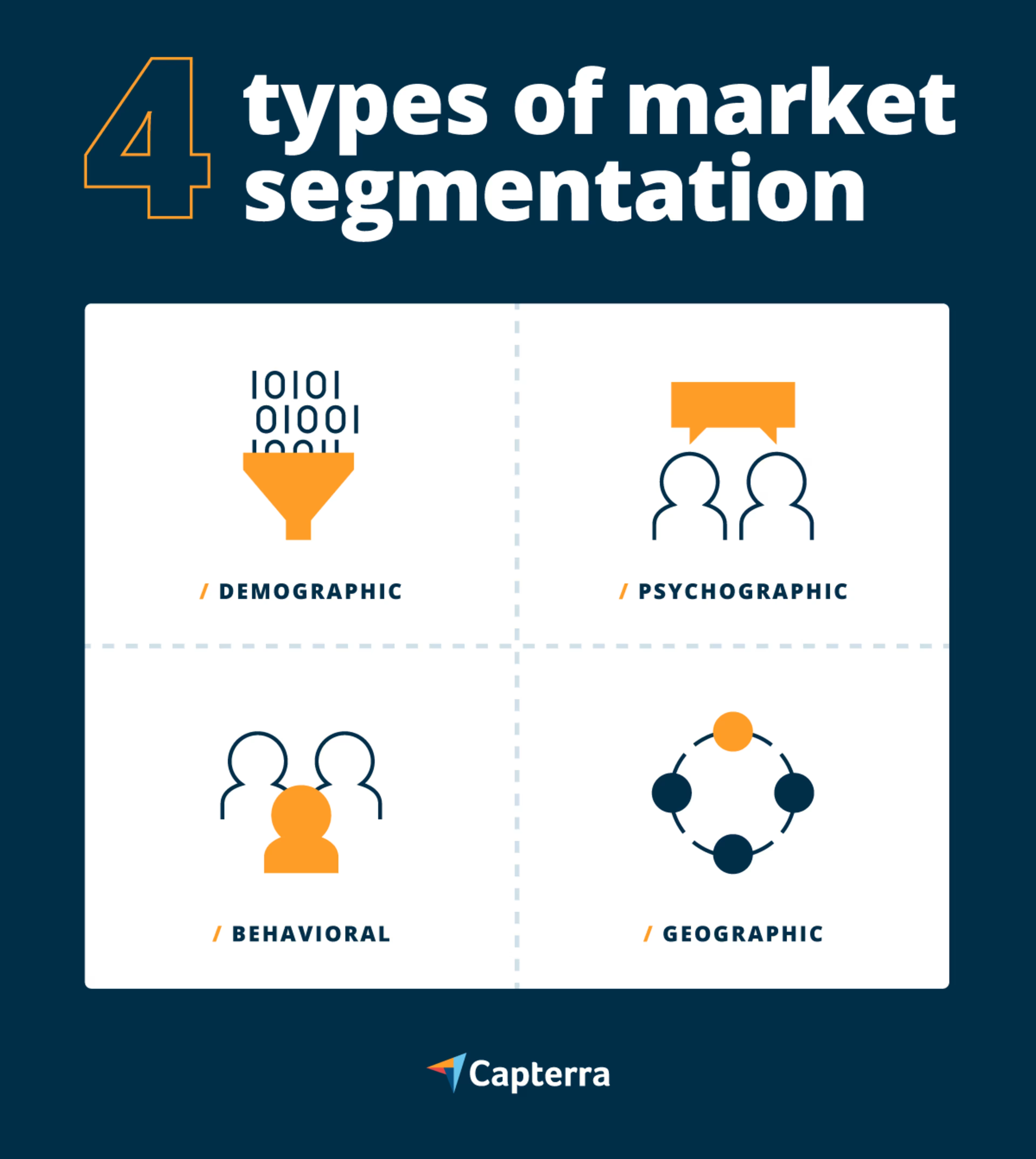Effective segmentation doesn’t limit opportunity; it’s a way to prioritize and focus your marketing and sales resources on customers most ready to buy from you now.

What is market segmentation?
Market segmentation is a strategy of organizing your potential (and existing) customers, grouping them into categories based on common traits in order to identify your target market. This smaller target market allows your marketing and sales teams to curate the best possible experience for the most common segments of your audience. This target audience should serve as a profile of your highest value potential customer, and will guide the strategy you build to reach that customer segment.
What does that look like for an everyday business? Let's pretend you are the owner of a local sporting goods store looking to design a new marketing strategy. You have a loyal base of customers but only a few new faces, so you are looking to build a digital presence and market your store online. Using the data you already have from your reliable customer base, you can begin to scope out market segments.
What are the four types of market segmentation?
The four major types of market segmentation are as follows:
Let’s break those down:

1. Demographic segmentation
The most common type of market segmentation, a demographic segment is grouped by traits such as age, nationality, gender identity, income, family size, and occupation.
Your local sporting goods shop might identify a large number of families purchasing youth football pads every fall, or a higher margin of success with bicycle sales among the 18-34 crowd.
2. Behavioral segmentation
A behavioral segment is grouped by how potential customers engage with your business. To segment your existing and potential customers by behaviors, look for indicators such as usage and engagement with your marketing assets and content.
If your sporting goods shop hosts a Q&A with someone hiking the whole Appalachian Trail, those in attendance are good candidates to target with advertisements for hiking boots.
3. Psychographic segmentation
Psychographic segmentation organizes customers based on what they prefer and what they value. Other indicators can include variables such as lifestyle, attitudes, and interests.
Social media is a great place to look for these psychographic indicators. Your sporting goods store wants to test out interest in a new line of camping gear? Check social media for communities of camping enthusiasts.
4. Geographic segmentation
Geographic segments are based on a customer’s physical location. These market segments can be based on factors such as country, city, primary language, population, and even climate.
If your sporting goods store is located in a beach or lake town, you’ll likely find success in targeting folks who love to fish.
Why is market segmentation important?
Common business knowledge suggests that the most sure path to success is to focus your efforts on reaching potential buyers who are most willing and able to buy from you. Market segmentation helps you identify and market to those customers.
Effective segmentation doesn’t limit opportunity; it’s a way to prioritize and focus your marketing and sales resources on the segments that are most ready to buy from you now.
A strong market segmentation strategy will boost your business in three strategic ways:
Increase efficiency
Reduce risk
Build credibility
Increase efficiency: With carefully defined segments, your sales and marketing teams can build more effective, personalized campaigns that pack a punch for the segment that you’re targeting. Gartner attributes “higher response rates, improved inbound lead generation and better lead conversion” to these kinds of focused, targeted campaigns (full article available to Gartner clients).
Reduce risk: Market segmentation limits the risk of your campaigns and advertisements saying the wrong things to the wrong people. A single, generic campaign strategy employed across all of your potential customers risks feeling lukewarm and forgettable. Especially in a competitive market, personalized marketing strategies are the surest bet for reaching customers.
Build credibility: More buyers expect buyer-focused campaigns with personalized, relevant content. Market segmentation enables sellers to focus on key market categories, building specificity and knowledge that builds trust and increases their credibility with buyers. In a crowded field, that trust could be what sets your business apart from competitors.
How do I get started?
The best place to start is to get to know your existing customer base. Customer experience software (CXM) is a great way to track sentiment, spot trends, and begin to outline possible target segments for your business. Check out Capterra’s CXM buyers guide for more information.
For more insights into market segmentation and identifying buyer trends within your customer base, check out these articles: